Depending on the operating system of your computer, there are different ways to determine the versions of software installed on your computer. Refer to the appropriate section below for Windows, Mac, and Linux operating systems:
Windows:
There are three methods to check what version of NI software is installed on your Windows computer. The first method is through Measurement & Automation Explorer. The second method is through the Windows Control Panel.
Measurement & Automation Explorer:
- Launch Measurement & Automation Explorer by navigating to Start»Programs»National Instruments»Measurement & Automation.
- Expand the Software menu in the Configuration section.
- Select the software you want to check. The version appears to the right on the Attributes panel as shown below.
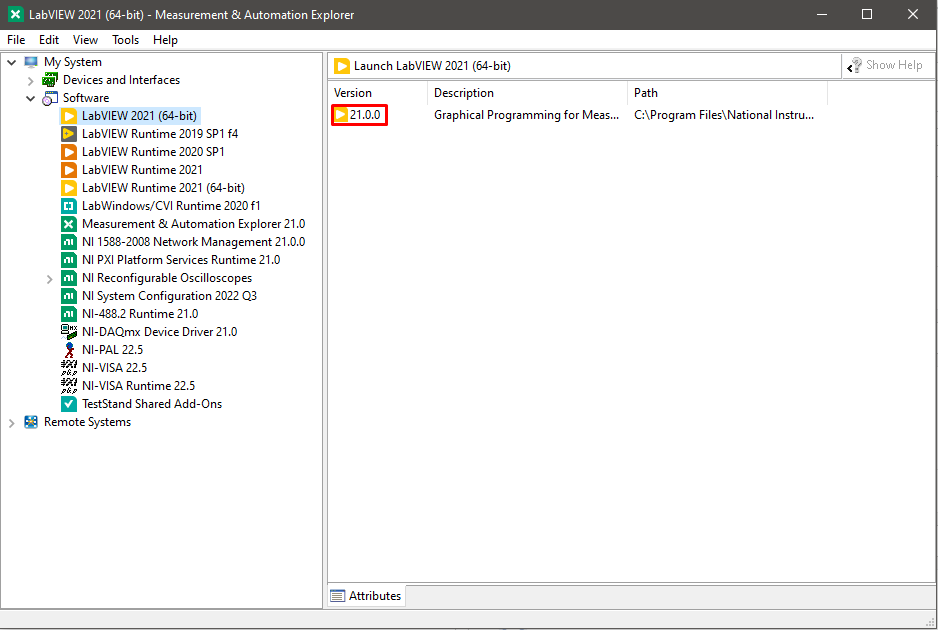
Using NI Package Manager:
- Launch NI Package Manager by navigating to Start»Programs»National Instruments»NI Package Manager
- Expand the Installed tab menu in the main screen of NI Package Manager.
- In the Version column you can find the version of the software in question.
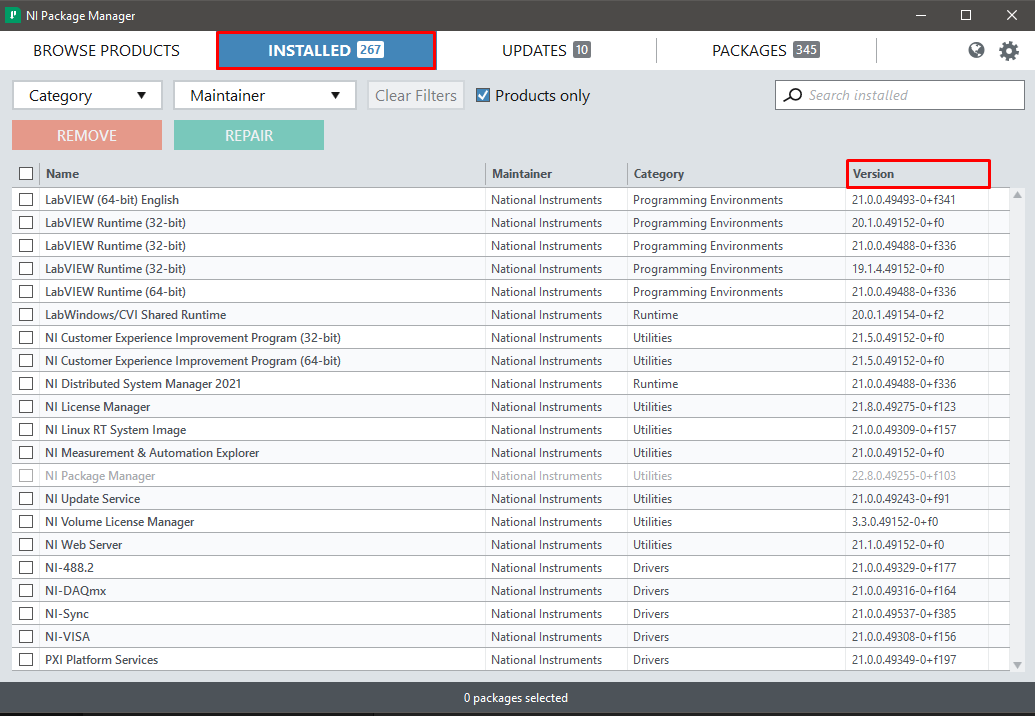
* Windows Control Panel:
- Navigate to Start»Settings»Control Panel.
- Open Add or Remove Programs.
- Select National Instruments Software from the list.
- Click Change/Remove. This launches a window that displays all NI software installed on your computer with the version number listed next to it as shown below.
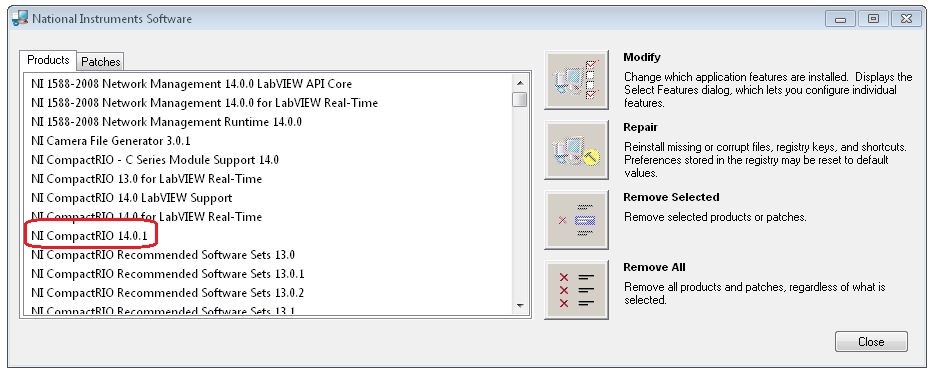
*Note: Please remind that this last method work with software versions older than 2019
Mac OS X:
On Mac OS X, there is an application called System Profiler which can be used to determine the versions of either drivers or Applications that are installed.
Complete the following steps to check the versions through System Profiler:
- Click the Apple Logo a the top left of the screen and select About This Mac.

- On the Screen that opens, click System Report..., or in older versions of Mac More Info..., and System Profiler will get launched.
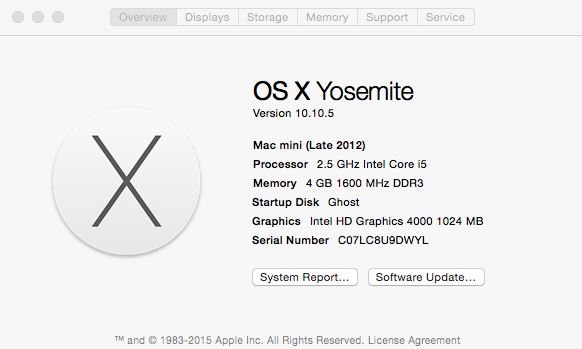
- Alternatively, System Profiler can be launched by navigating to Macintosh HD»Applications»Utilities»System Profiler.app.
- Once System Profiler.app is open, Navigate to the Contents pane to determine software versions. Software»Applications
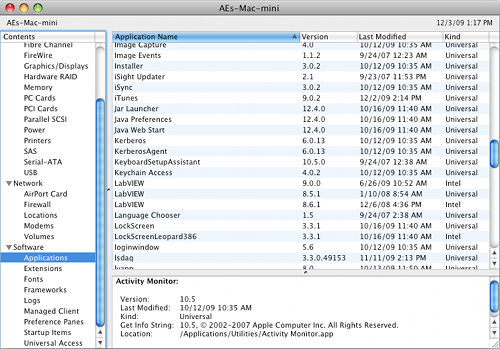
- Scroll down through the Applications Pane and look for any entries titled "LabVIEW." The version number is displayed to the right of each entry. The image above shows that LabVIEW 2009 (displayed as LabVIEW 9.0.0), LabVIEW 8.6.1 and LabVIEW 8.5.1 are installed.
- For drivers, navigate to Software»Frameworks in the Contents pane to determine driver versions.

In the image above, NI-488.2 is listed as NI488 and shows a version of 2.5.5. NI-DAQmx Base is listed as nidaqmxbase and shows a version of 3.3.0. The image below shows NI-VISA version 4.5.1.
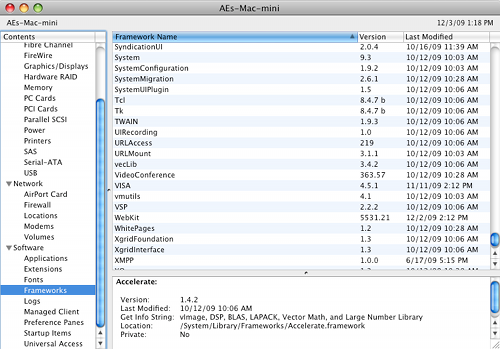
Linux:
Package managers can be used to both search for and display all packages installed on a Linux computer. Depending on the Linux distribution and graphical environment being used, different package managers may be available. The steps will be similar between distributions and the following will show the general method used in Linux operating systems.
Complete the following steps to determine the versions in SUSE Linux with a KDE environment:
- Click the Kickoff Application Launcher in the bottom left corner of the screen and navigate to Computer»Install Software.
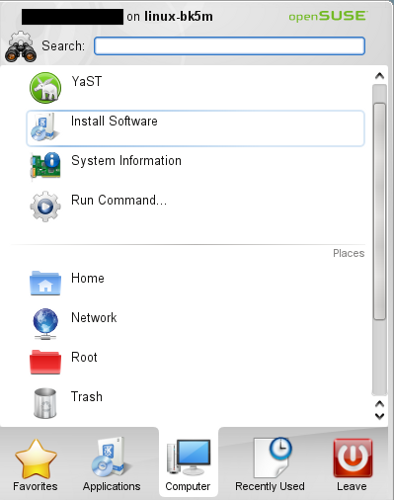
- Once YaST2 opens, you will be presented with a window similar to the one below:
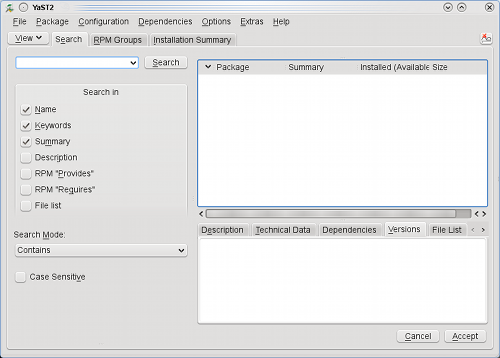
- In the search field, type "LabVIEW" and then click Search.
- Once the search results are displayed, select labview-2009-core and click the Versions tab on the bottom right information screen. The number in the description will show the version of software installed. As can be seen in the screenshot below, LabVIEW 2009 (version 9.0.0) is installed.
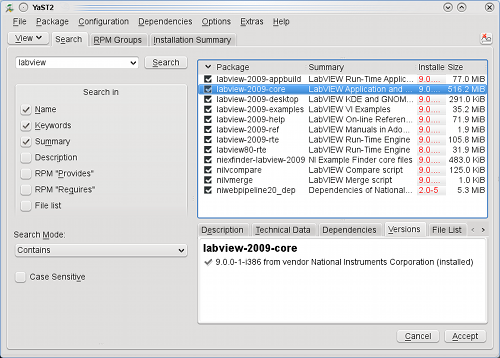
- For drivers, simply search for the driver name in the same search field. As an example, searching for "488" will find the NI-488.2 driver. The screenshot below shows that version 2.5.1 of the NI-488.2 driver is installed.
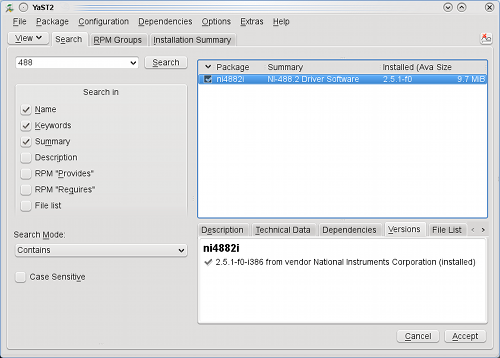
Additional Information
- In NI MAX, the default bitness for LabVIEW is 32-bit; if no bitness is specified in the LabVIEW version name, it is 32-bit (i.e. LabVIEW 2017 f2). LabVIEW 64-bit will be specified in its name in the Software list (i.e. LabVIEW 2017 (64-bit)).
- LabVIEW toolkits and modules will be organized under their corresponding version of LabVIEW.